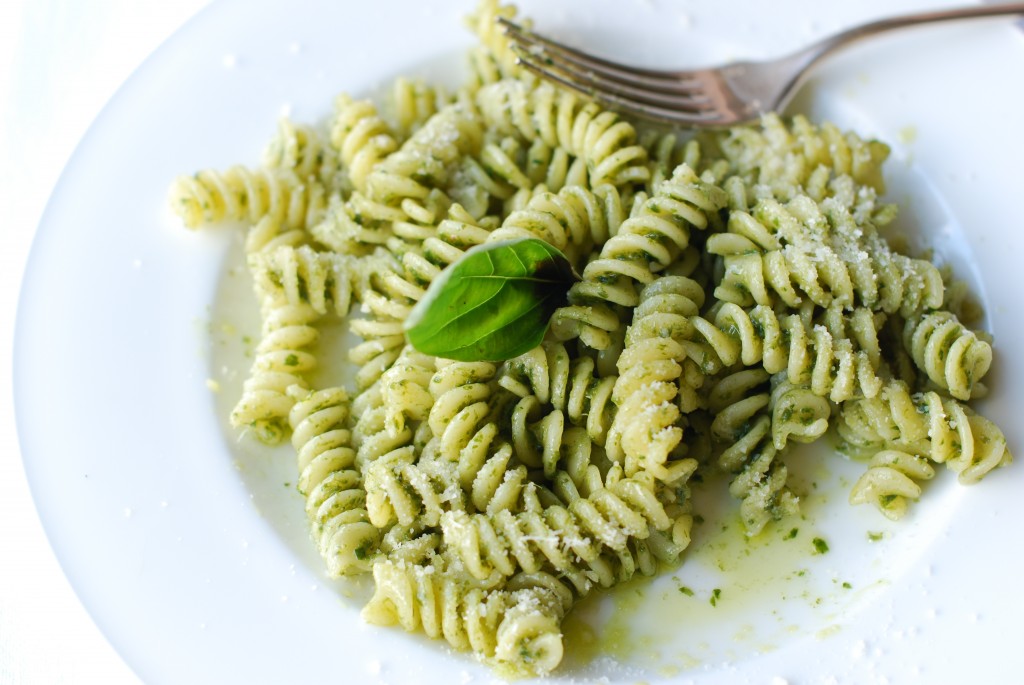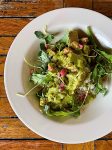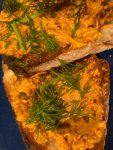Recipe: Classic Pesto
For tips on making pesto, see this post. For the recipe I like to use when I make pesto, read on!
2 packed cups of fresh basil leaves, preferably less than 1 ½ inches long
3 tablespoons pine nuts
1 large clove of garlic, unpeeled
¼ cup grated Parmigiano–Reggiano cheese
3-4 tablespoons delicate extra virgin olive oil
Rip the basil into small shreds. Doing this by hand causes the least damage to the leaves, but a food processor can do the same job much more quickly.
Toast the pine nuts in a small, dry skillet over medium heat, shaking frequently, until they are nicely browned and smell toasty, about 5-7 minutes. Remove the pine nuts from the pan and set them aside. Put the pan back on the heat and add the unpeeled garlic, turning every 2-3 minutes, until dark on all sides and fragrant, about 8-10 minutes total. Let the garlic cool, then peel.
In a large mortar, pound the garlic with a large pinch of salt until it forms a smooth paste. Add the pine nuts and pound for about 2-3 minutes, until you have a smooth mass that sticks to the bottom of the pestle. Then add in the ripped leaves, a few tablespoons at a time. Grind them into a paste, pressing with a steady rotary movement, lifting the pestle as little as possible. Keep pressing until individual pieces of basil are hardly distinguishable.
Stir in the grated cheese with a spoon, using it to homogenize the paste. Finally, stir in the olive oil to create a thick, creamy sauce.
When serving pesto on pasta or potatoes, thin it out with three parts pesto to one part starchy cooking water. This helps the sauce to coat evenly.
Store pesto in a jar topped off with olive oil at room temperature for a couple of days, or refrigerated for up to a week. Pesto can also be frozen for longer storage, but in this case it’s best to not add in any cheese until you serve the pesto.
Makes one cup of pesto – enough to serve six to eight





Zingerman’s Art for Sale